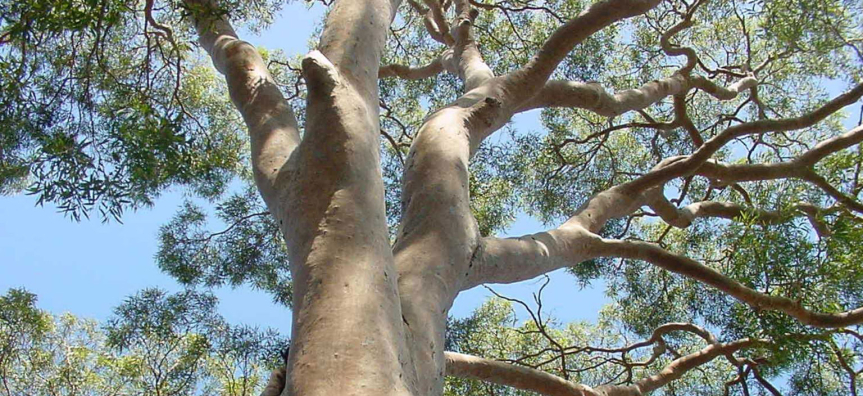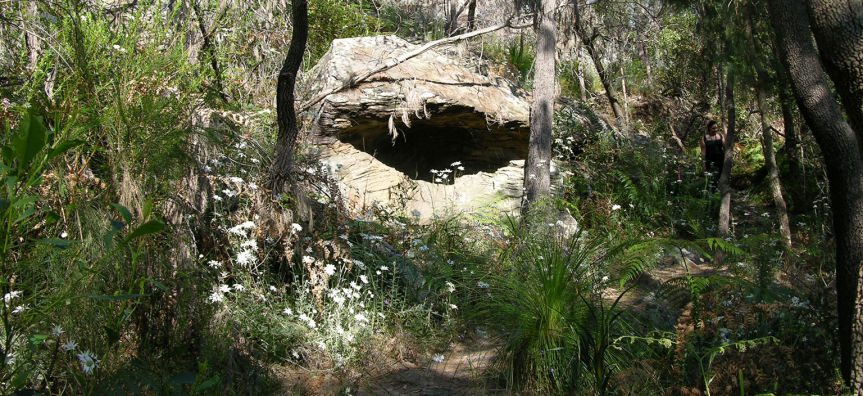Angophora Reserve is located in the suburbs of Avalon and Clareville. It contains three vegetation communities all of high conservation significance for natural and cultural heritage and is habitat for threatened and significant fauna species.
The reserve consists of 18.5 hectares of urban bushland in Avalon on the Barrenjoey Peninsula. It is dominated by remnant forest and woodland vegetation communities. This reserve provides a small taste of the peninsula similar to what it was like pre-settlement and provides significant samples of vegetation communities and fauna habitats that are under threat. Angophora Reserve was originally purchased by the Wildlife Preservation Society in 1937 as a bushland sanctuary.
The reserve was intended especially to preserve a giant Angophora tree, which still stands today but is now dead.
Plants
Five native plant communities are found in the reserve:
- Woodland (e.g. Angophora costata – C. gummifera)
- Open Forest (e.g. Corrymbia maculata)
- Stands (e.g. Livistona australis)
- Fern Swamp
- Sedge Swamp
Animals
Two frog species, four lizards, thirty four birds and eight mammals have been recorded in or near the reserve. The parrots, of which there are seven species, are very prominent. Especially common are Rainbow Lorikeets and Sulphur-crested Cockatoos.
The mammal species once included the koala, which is now considered extinct from the Northern Beaches. Other notable mammals are the Echidna, Long-nosed Bandicoot and Squirrel Glider. The Barrenjoey population of Squirrel Glider is also listed as an endangered population.
Aboriginal Heritage
Angophora Reserve contains one of the most archaeologically significant Aboriginal shelter sites in the Sydney region, which has a high scientific potential for revealing intensive and complex use of the shelter. The presence of previously undisturbed human skeletal remains within a substantial midden deposit makes this site unique in the Sydney area. Due to the presence of human remains, the site also has a high level of significance to the Aboriginal community
Wildlife Protection Area
Dogs must be on a leash at all times in this reserve and cats are not allowed here at any time. Find out more


